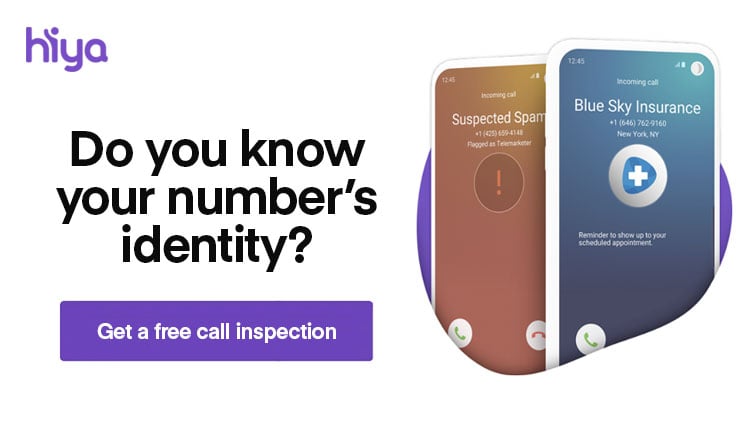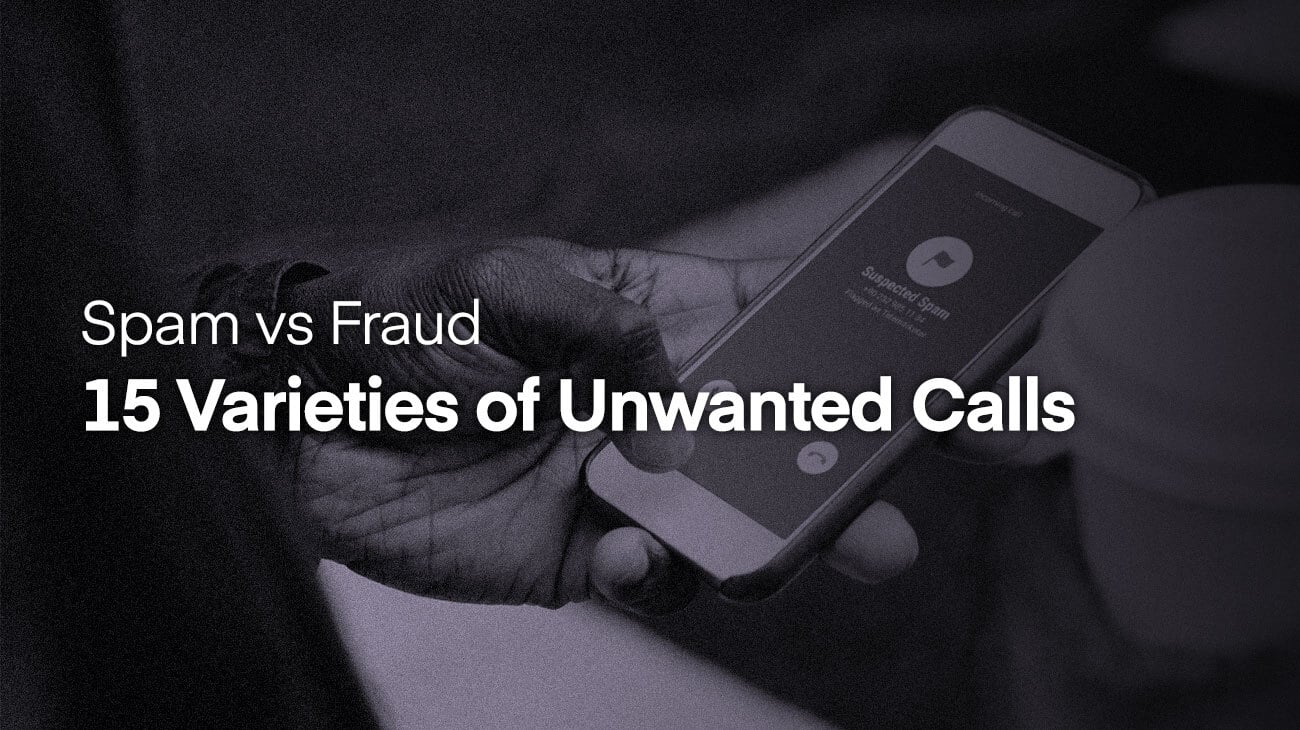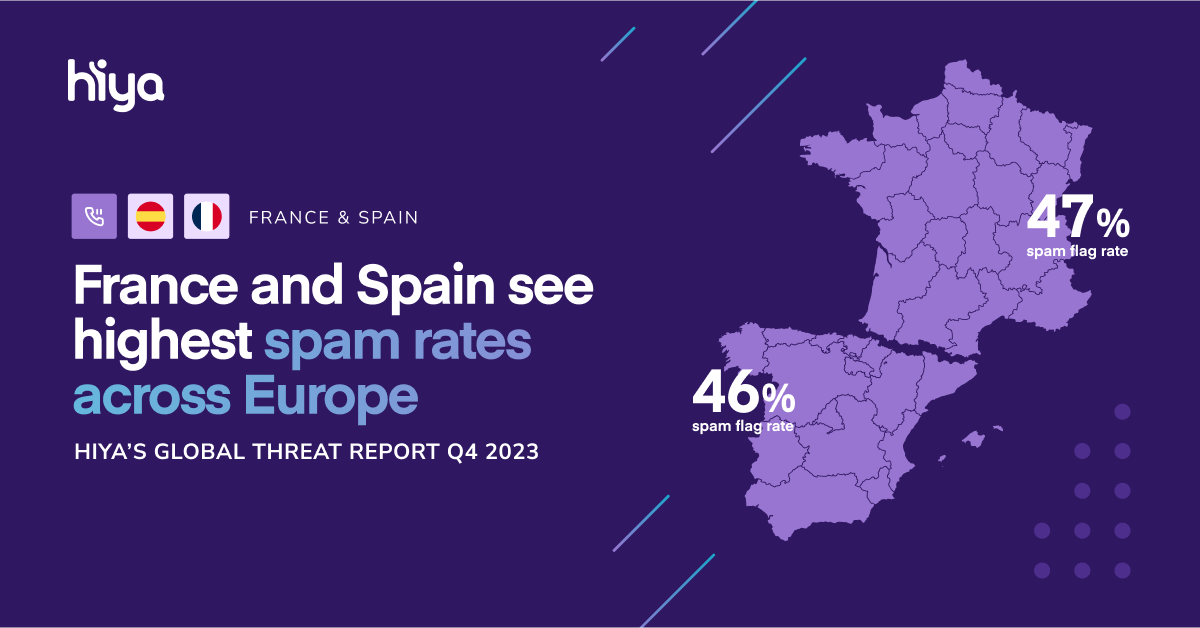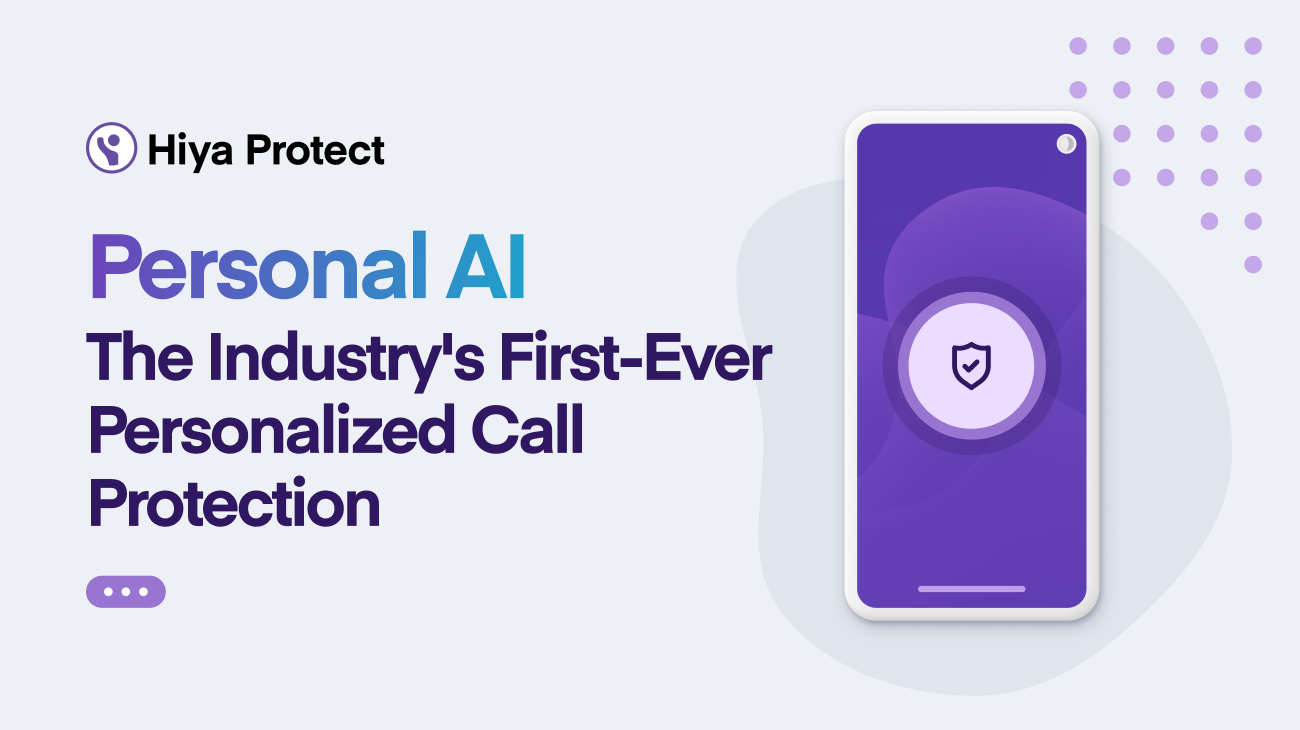As an individual consumer, you probably appreciate it when your caller ID identifies incoming calls with a “Spam Risk” label or similar message. However, if your organization frequently makes calls to customers, you may understandably be concerned about these labels and what they mean for your business phone number. This blog post explains call warning labels like “Spam Risk” and best practices for building a positive call reputation.
What is a fraud risk or spam risk caller ID?
As personal phones have become more prevalent over the past 30 years, network providers have worked to decrease the number of risky or outright fraudulent calls that consumers receive.
Flagged incoming calls are displayed on consumer devices with a warning that says “Spam Risk," “Possible Scam,” or another similar message indicating that this call poses a risk to the consumer.
How do providers know which calls might be deceptive or unwelcome? They use spam analytics systems that incorporate data modeling and AI to detect calls that are likely to pose a risk to consumers.
While this works to reduce the number of unsolicited and fraudulent calls that consumers receive, they can sometimes flag legitimate business numbers, meaning that calls show up on the caller ID as “spam risk” or another similar warning.
If this is the case, there are steps you can take to understand why your calls appear this way, and to ensure your numbers are recognized as legitimate and employ customer-friendly calling practices.
How do spam risk labels hurt your business?
Consumers rely on their caller ID when they decide to answer calls. If numbers from your call center are being flagged for fraud or spam risk, it can negatively impact your answer rates, which in turn can decrease overall call center productivity.
Why are your calls being marked as fraud or spam risk?
Network providers employ spam analytics systems to identify and label suspicious calls for their customers that may be marked as a spam risk. These systems are dynamic, analyzing not just the phone number but a variety of factors surrounding the entire context of a call. This means there are multiple factors that can influence call labeling.
These can include:
-
Who is calling
The caller’s identity is paramount to finding suspicious calls. Recognized organizations with transparent information about their identities are less likely to be seen as suspicious — because scammers typically don’t like to provide that level of transparency.
-
What is known about enterprise phone numbers
The history and data linked to an enterprise’s phone number provide valuable insights, and can influence whether a call is identified as suspicious.
-
What their calls look like
What patterns do your calls typically exhibit? High volumes of calls to a wide array of unrelated numbers, especially if done in a short time frame, can signal invasive or aggressive behavior. Conversely, consistent calls to a specific group suggest legitimate business or personal interactions.
-
How recipients respond to these calls
The reactions of call recipients are crucial. A pattern of negative responses, such as call blocking or spam reporting, can lead to future calls from that caller being labeled as spam or nuisance. However, positive interactions like consistently answered calls can contribute to a favorable call reputation.
Ways to prevent being marked as scam or spam
In this landscape, it's increasingly important for businesses to ensure their calls are customer-friendly — respecting both consumer preferences and applicable laws. By following customer-friendly calling practices, you can establish yourself as a trusted caller, improving engagement with customers while proactively preventing reputation pitfalls along the way.
There are many best practices you can employ to ensure your calls are customer-friendly and maintain a positive call reputation. They include:
-
Registering your business
Phone number registration is the first step that every business should take to protect the integrity of their call reputation. When you register your business, you identify yourself as a legitimate caller. Scammers often avoid revealing their identities, but by registering, you establish your organization as a credible entity.
Phone number registration is your right as a business, and should always be free. While registration is an important first step that establishes you as a legitimate caller, it is still essential to maintain customer-friendly calling practices to promote a positive reputation.
-
Adhering to laws and regulations
There are a variety of laws that govern how and when businesses can contact consumers. Understanding and complying with these laws and regulations, especially those that govern the use of robocalls, auto-dialing, and other technologies, will help you maintain a positive call reputation.
Additionally, if you’re using auto-dialers, make sure that they are set up correctly so that they’re not making several calls before connecting your agent with a consumer. Perform regular audits of all departments within your call center to ensure compliance.
-
Utilizing feedback left with blocked or reported calls
When recipients block or report phone calls, they can leave comments that serve as a valuable resource for understanding your business's calling practices. These insights can pinpoint problems affecting customer satisfaction. Hiya's Call Feedback feature is a powerful tool that has aided businesses worldwide in identifying the reasons behind reported calls, whether they're technical difficulties with dialers or issues with calling agents. By addressing these root causes, you can enhance your calling practices and solve the underlying issues behind a low call reputation.
To discover more best practices, check out our complete call reputation guide.
What to do if you’re already been marked as a spam risk
Just because you’ve been flagged as spam in the past doesn’t mean that your phone number will always be flagged in the future. It is possible to recover your call reputation.
If you have been flagged as spam, first make sure that you’ve registered your numbers. Once registered, the best course of action is to employ consistent, customer-friendly calling practices. In doing so, you can build and maintain a positive call reputation. This is an investment in the long-term health of your call reputation — one that is well worth the time and effort.
Check out our guide for tips to build a positive call reputation through customer-friendly calling practices.
Improve your customer experience
If your number is showing up as spam risk, it can have serious repercussions on your customer experience - decreasing your answer rates and fracturing trust between you and your customers.
The good news is, it is possible to build and maintain a positive call reputation through customer-friendly calling practices. In doing so, not only can you foster a positive call reputation, but you can also improve overall call outcome.
Learn more in our guide.












